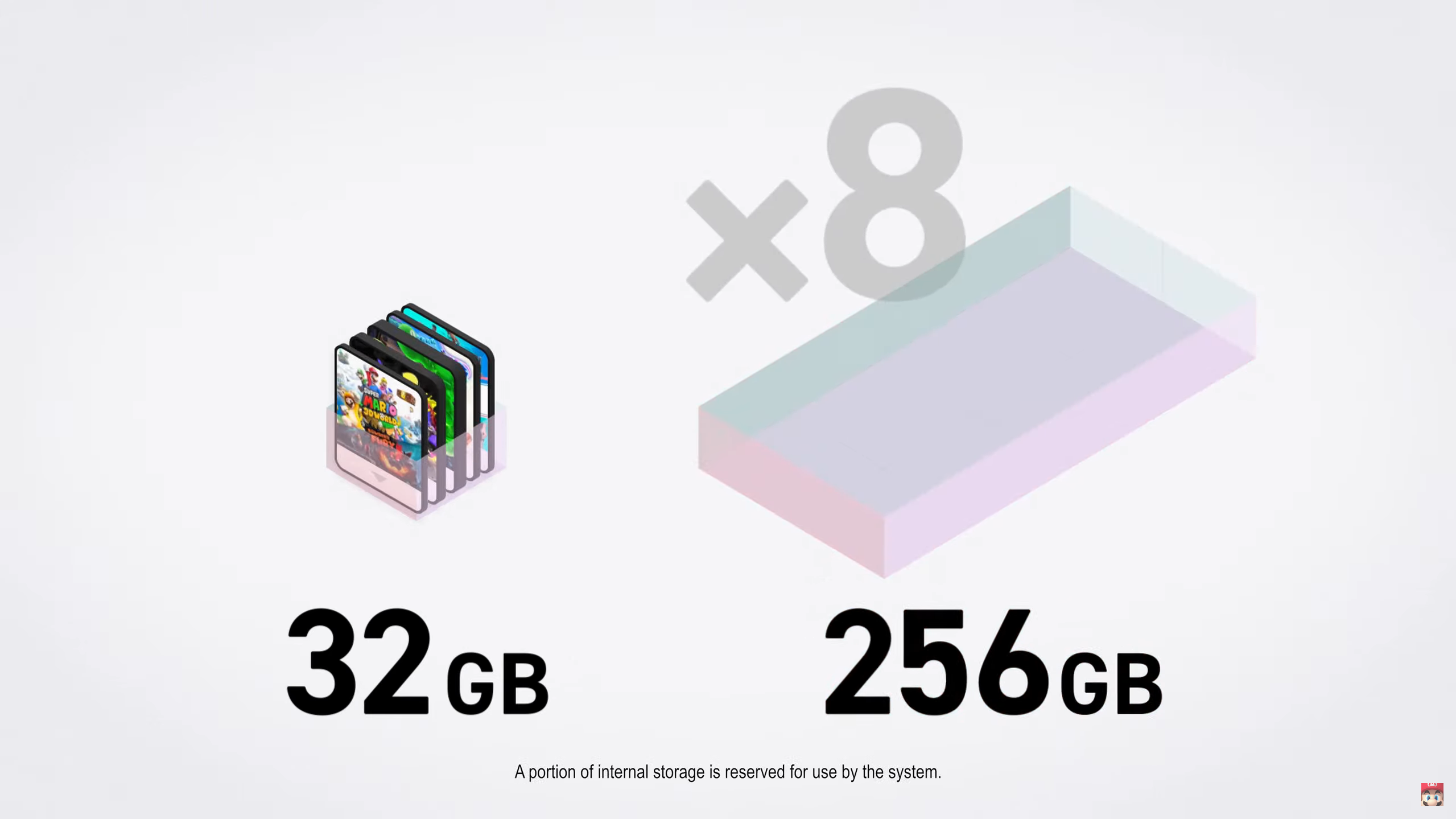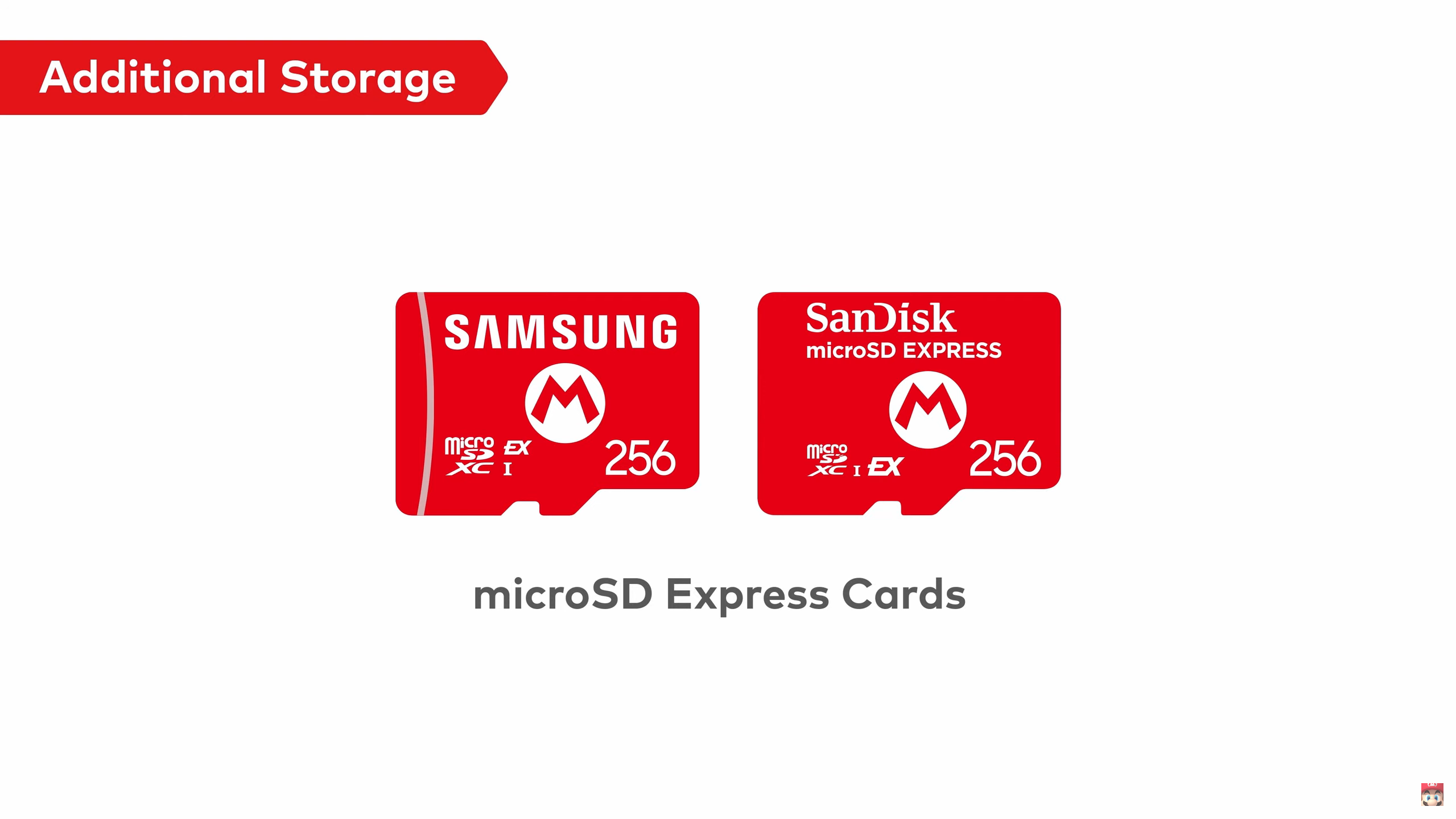Following the grand reveal of the Nintendo Switch 2, we learned a handful of technical details about the console. Most notably, the Switch 2 is set to require a different MicroSD standard than its predecessor, named MicroSD Express. And, if current pricing for announced products is anything to go by, it will be painful on your wallet. In fact, on a capacity basis, they’re pricier than many modern SSDs — MicroSD Express cards range from 20 to 25 cents per GB of storage, whereas bargain basement SSDs can retail for as little as 5 to 6 cents per GB. That’s partly due to the NVMe and PCIe 3.0 support, commonly found on M.2 SSDs, that’s baked right into the new MicroSD Express cards.
Sandisk’s Class MicroSD Express cards have an MSRP of $49.99 for just 128GB of storage, with the 256GB variant at $64.99. These cards operate at speeds up to 880 MB/s read, 480 MB/s write, and 100 MB/s sustained write.
However, Lexar has announced larger capacities of up to 1TB. But, you might want to brace your wallet, as the prices are predictably not pretty for this new standard.
Lexar’s Play Pro 1TB MicroSD Express card costs a staggering $199.99, with the 512 GB model at $99.99, and 256 GB at $49.99. Lexar boasts that these cards can achieve speeds of up to 900 MB/s read and 600 MB/s write.
Sandisk’s MicroSD Express cards cost up to $0.39 per-gigabyte for the 128GB model, while the 256GB model costs $0.25 per-gigabyte. Lexar’s options seem to be the best deal, with all three storage variants at a standardized cost of $0.20 per gigabyte, while also seemingly boasting higher-end specs.
Why storage is more important than ever for Switch 2

We know that the Switch 2 will ship with 256GB of storage as standard, but there’s a catch. Even if you purchase a physical game, you might not be able to play it immediately just by inserting the cartridge. Some titles will require the full title to be downloaded and installed onto the system, with the cartridge serving as a glorified physical license key, which Nintendo calls a “Game-Key Card”. This might be down to companies and publishers wanting to cut down on cartridge costs, especially as the price of NAND storage is expected to rise.
For example, if you wanted to purchase the Street Fighter 6 cartridge, you’ll end up having to install an additional 50GB of data onto your system right off of the bat. This means that the meager 256GB of storage that the console ships with will inevitably fill up. This reveals a hidden cost for the privilege of using Nintendo’s new system, expensive new MicroSD cards to expand storage, unless you’re willing to play the frustrating game of redownloading titles and managing storage any time you insert a Game-Key Card into your system.
The Switch 2’s MicroSD Express standard explained

While it might be tough to tell the difference between a standard MicroSD card and a MicroSD Express card at a glance, potentially causing some confusion for potential buyers, the technical details explain that MicroSD Express is a big jump from the UHS-I standard used by the Nintendo Switch.
The SD Association’s current SD Express speed classifications divide MicroSD Express into four categories: Class 150, Class 300, Class 450, and Class 600. The numbers at the end of each classification denote the minimum read / write performance of the cards in MB/s. MicroSD Express cards also have significantly more pins than their older UHS-I brethren, at either 16 or 17, compared to just eight.
Underpinning the technology are NVMe and PCIe 3.0 interfaces, which allow for speeds of up to 2GB/s using a PCIe Gen4 interface. However, with technical details of the Switch 2’s capabilities on the lighter side, we still don’t know if the console will be able to match those theoretical speeds, and no currently-announced MicroSD Express card is able to achieve those peak speeds, either.
“The new microSD Express standard offers us a way to deliver a memory card with incomparable performance in that form factor,” said Joey Lopez, Director of Brand Marketing at Lexar in a press release. “We’re excited to create a card for our customers that leverages the benefits of this new standard and prepares gamers for the next generation of handheld gaming.”
So, there’s a gulf between the fastest UHS-I MicroSD Card and the fastest theoretical MicroSD Express card. The fastest announced card is currently the Lexar Play Pro MicroSDXC Express card, but those speeds will inevitably have to be tested once the Switch 2, and the MicroSD Express cards, are in our hands.





